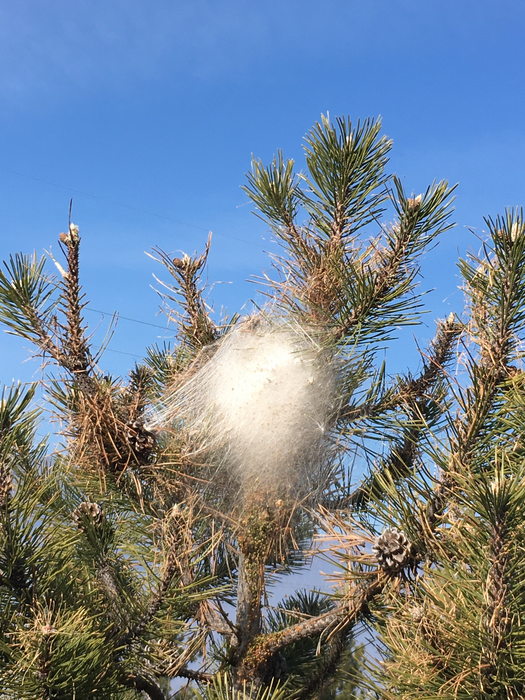Adopting control techniques that can be customized to particular local conditions begins with the early discovery of pest infestation. Although remote sensing technology can be useful for quickly scanning wide regions, it is not always appropriate since some objects can be difficult to detect.
 The nest of a pine processionary moth. Image Credit: Garcia et al.
The nest of a pine processionary moth. Image Credit: Garcia et al.
On the other hand, drones or unmanned aerial vehicles (UAVs) can assist by going closer to individual trees and spotting small, unusual signals.
The pine processionary moth is an insect that attacks trees in gardens and parks and poses a concern to the general public’s health because the hairs emitted by its larvae can sting or irritate. The pest is a species of concern because of its quick population growth and expansion into new areas.
Researchers have explored several deep-learning techniques to find pine processionary moth larvae’s nests on cedar and pine trees. Artificial Intelligence (AI) was used to locate and identify the nests using images captured by drones flying above the trees.
Even under varying densities, the application of AI on drone images was successful in locating pine processing moth nests on trees of various kinds and sizes. The technique works well for finding moth nests in urban and rural areas.
By knowing where the nests are, tree health managers can take the necessary precautions to limit damage and public health threats.
The study authors stated, “The study proved the advantage of using UAVs to document the presence of at least one nest per tree. It therefore represents a substantial step forward in the integration of the UAV survey with ground observations in the monitoring of the colonies of an important forest defoliating insect in the Mediterranean area.”
The study was included in the journal NeoBiota’s special edition on European forest pests.
They also suggested that the technique could be used for different pests.
The authors concluded, “This technique can pave new avenues in the surveillance and management of emerging and non-native pests of trees, where early detection and early action should go together to achieve a satisfactory level of protection.”
Journal Reference:
Garcia, A., et al. (2023) Testing early detection of pine processionary moth Thaumetopoea pityocampa nests using UAV-based methods. NeoBiota. doi:10.3897/neobiota.84.95692.